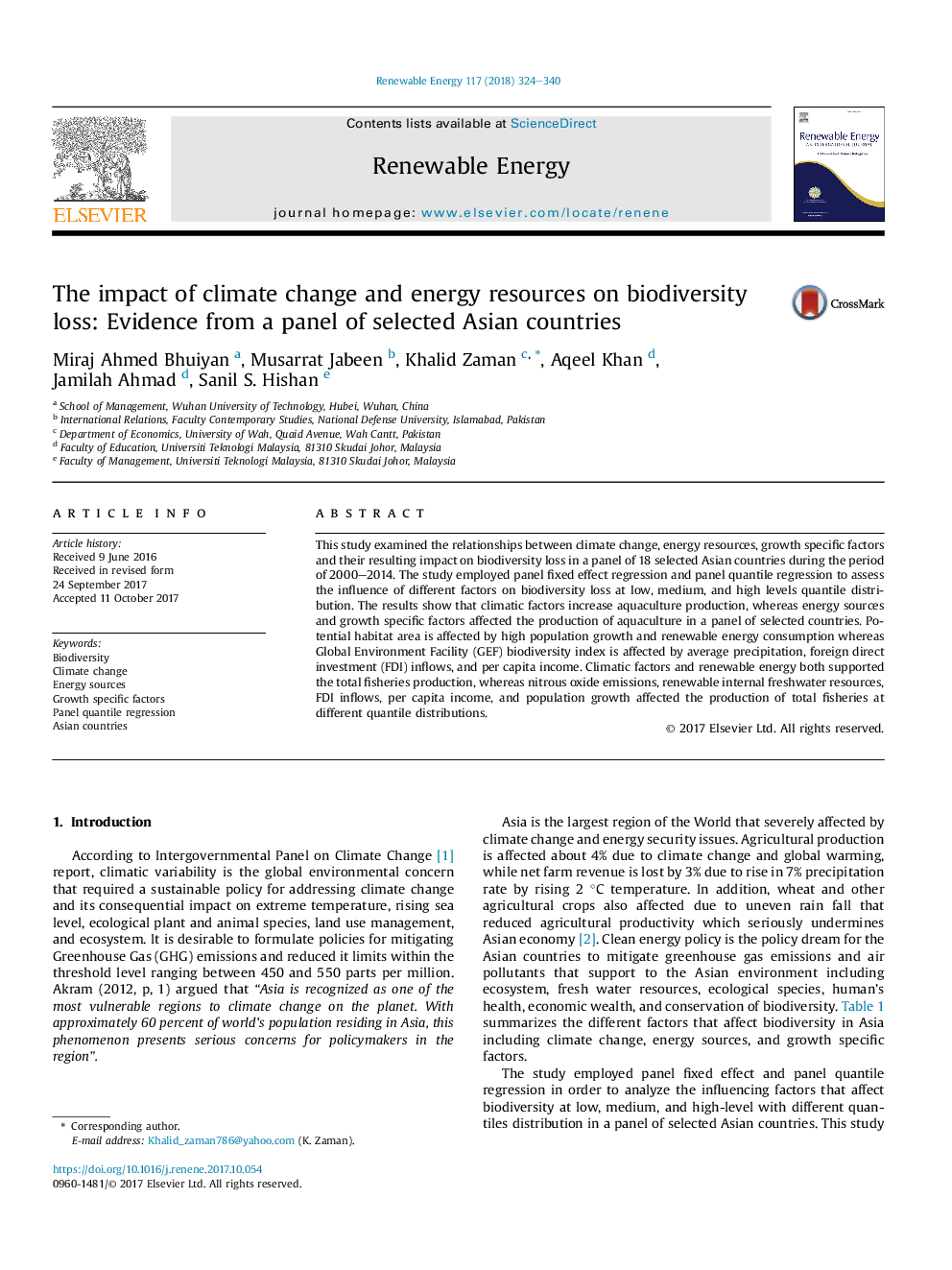| Article ID | Journal | Published Year | Pages | File Type |
|---|---|---|---|---|
| 6765044 | Renewable Energy | 2018 | 17 Pages |
Abstract
This study examined the relationships between climate change, energy resources, growth specific factors and their resulting impact on biodiversity loss in a panel of 18 selected Asian countries during the period of 2000-2014. The study employed panel fixed effect regression and panel quantile regression to assess the influence of different factors on biodiversity loss at low, medium, and high levels quantile distribution. The results show that climatic factors increase aquaculture production, whereas energy sources and growth specific factors affected the production of aquaculture in a panel of selected countries. Potential habitat area is affected by high population growth and renewable energy consumption whereas Global Environment Facility (GEF) biodiversity index is affected by average precipitation, foreign direct investment (FDI) inflows, and per capita income. Climatic factors and renewable energy both supported the total fisheries production, whereas nitrous oxide emissions, renewable internal freshwater resources, FDI inflows, per capita income, and population growth affected the production of total fisheries at different quantile distributions.
Related Topics
Physical Sciences and Engineering
Energy
Renewable Energy, Sustainability and the Environment
Authors
Miraj Ahmed Bhuiyan, Musarrat Jabeen, Khalid Zaman, Aqeel Khan, Jamilah Ahmad, Sanil S. Hishan,
